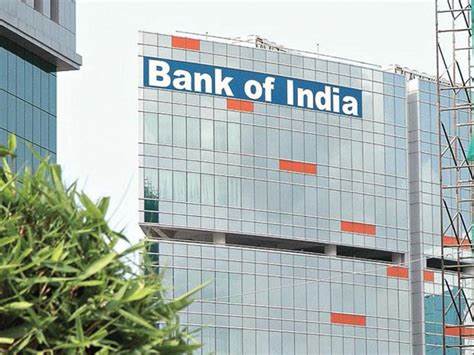In 2023, Bank of India plans share sale to meet SEBI’s minimum public holding norms

Bank of India plans share sale to meet SEBI’s minimum public holding norms
The Bank of India, a state-owned bank based in Mumbai, is considering the possibility of selling shares to investors within the next year in order to comply with the Securities and Exchange Board of India’s (SEBI) minimum public holding requirement of 25 percent. Currently, the Government of India holds a stake of 81.41 percent in the bank.
The bank’s Managing Director, Rajneesh Karnatak, stated that they are exploring various options to meet SEBI’s requirement but emphasized that the decision to sell shares would depend on market conditions. Public sector banks in India have until August 2024 to comply with the SEBI regulation.

Meeting the minimum public holding requirement means that the bank needs to increase the proportion of shares held by the public, reducing the government’s stake. This move aims to enhance transparency, improve corporate governance, and increase public participation in the bank’s ownership.
By selling shares to investors, the Bank of India can achieve the necessary reduction in the government’s stake and increase public shareholding. However, the actual decision to sell shares will depend on market conditions, such as the prevailing stock market situation, investor demand, and other relevant factors.

After the share sale, the holding of the Government of India in the Bank of India would fall below 75 percent, depending on the amount of shares sold. This reduction in government ownership is in line with the SEBI’s minimum public holding requirement of 25 percent.
The Bank of India’s Managing Director has indicated that the bank expects credit growth of approximately 11-12 percent in the current financial year. This growth projection is based on the bank’s focus on providing loans in various sectors, including retail, MSME (Micro, Small, and Medium Enterprises), and agriculture. By extending credit to these sectors, the bank aims to support economic development and meet the borrowing needs of individuals, small businesses, and farmers.
On the deposit side, the bank has set a target to increase its liabilities by 10 percent during the current financial year. This implies that the bank intends to attract more deposits from customers. Deposits are a crucial source of funding for banks, enabling them to lend and support economic activities. By aiming to grow its deposit base, the Bank of India aims to enhance its funding capabilities and strengthen its balance sheet.
Increasing liabilities through deposit growth signifies the bank’s intention to build a stable and diversified funding base. It also indicates the bank’s efforts to promote its savings and current account products, attract new customers, and deepen its relationship with existing customers.

Overall, the bank’s growth strategy involves expanding its loan portfolio in key sectors while simultaneously attracting more deposits to ensure sufficient funds for lending activities and support its growth objectives.
When asked about the bank’s resource mobilization plan, the Managing Director mentioned that the Capital Adequacy Ratio (CAR) of the bank stood at 16.28 percent as of March 2023. This CAR represents the bank’s ability to absorb potential losses. He expressed confidence that this level of capital adequacy should be sufficient to support loan growth during the year.
The Bank of India’s board has approved a plan to raise capital through bonds amounting to up to Rs 6,500 crore in the fiscal year 2024. This decision reflects the bank’s proactive approach to bolstering its capital position and ensuring it has sufficient resources to support its operations and achieve its growth objectives.
Raising capital through bonds is a common practice for banks to strengthen their capital adequacy and enhance their financial stability. By issuing bonds, the bank can attract investments from institutional investors and other market participants. The funds raised from the bond issuance will contribute to the bank’s capital base, which plays a crucial role in absorbing potential losses, maintaining financial soundness, and meeting regulatory requirements.
The bank’s proactive capital-raising plan indicates its commitment to ensuring it has adequate resources to support its lending activities, expand its business operations, and seize growth opportunities. By strengthening its capital position, the bank can enhance its ability to manage risks effectively, maintain liquidity, and sustain its long-term growth trajectory.
Overall, the bank’s approval to raise capital through bonds signifies its strategic focus on fortifying its financial foundation and positioning itself for sustainable growth in the future.
As per the board’s approval, the Bank of India can raise up to Rs 4,500 crore through various means such as a follow-on public offer, qualified institutional placement, rights issue, preferential issue, and/or Basel III compliant additional tier-1 (AT-1) bonds. Additionally, they can raise Rs 2,000 crore through Basel III compliant Tier-2 bonds, in one or more tranches. The decision to raise capital will be made based on the bank’s requirements and favorable market conditions.
During a town hall meeting in New Delhi on July 5, Bank of India’s Managing Director, Karnatak, encouraged officers and staff to focus on mobilizing Current Account Savings Account (CASA) deposits and increasing non-interest income. He emphasized that the bank is actively working on aligning its IT infrastructure and digital banking products to keep up with digitalization trends and enhance the customer experience.
Karnatak, along with Field General Manager Prashant Thapliyal and Head of Government Business D.S. Shekhawat, stated that every employee should prioritize customer satisfaction and strive to improve operational efficiency within the bank. This customer-centric approach and focus on efficiency are key factors for the bank’s success in providing quality services and meeting the needs of its customers.




